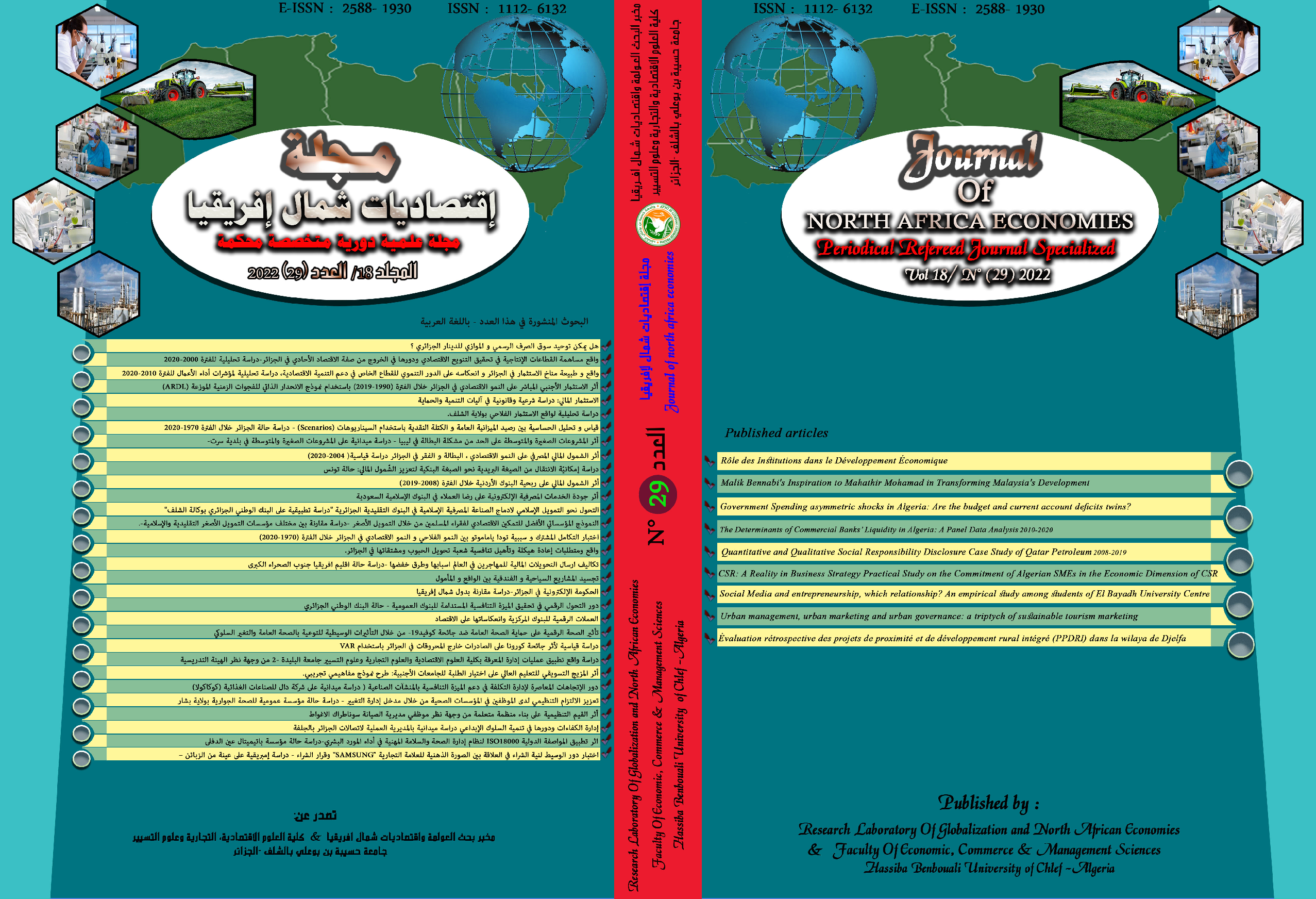قياس و تحليل الحساسية بين رصيد الميزانية العامة و الكتلة النقدية باستخدام السيناريوهات ) Scenarios ) - - - دراسة حالة الجزائر خلال الفترة 0101 0971
Measuring and Analyzing the Sensitivity between Budget stock and Monetary Mass using Scenarios - Case study of Algeria during the period 1970-2020
Keywords:
Key words: Budget stock, Monetary Mass , VECM Model, Impulse Response Functions, Scenarios.Abstract
This paper aims to measure and analyze the relationship and sensitivity that can arise between the budget stock and the money supply in the Algerian economy during the period (1970-2020) based on the scenarios technique extracted from the VAR model, The study reached the following results: The budget stock for the past two and three years affects the monetary mass significantly and inversely , as the size of the effect reached -0.51, -0.35 respectively. On the other hand, the monetary mass for the past year (for the two and four years late) also affects the budget stock significantly and inversely (positively), as the size of the effect reached -0.62 (0.86, 1.01 respectively ). The results of the different scenarios confirm the inverse relationship between the two variables during the forecast period (2021-2030), as the decrease ( increase) of the budget deficit by 10% will lead to a raising ( decrease) of the mony supply compared with baseline level to reach 24853.21 (24106.1) billion dinars in 2030. As for raising (reducing) the size of the monetary mass by 15%, it will contribute to reducing (raising) the budget stock compared to the baseline level, reaching -1766.07(-93.12) on average during the forecast period.





